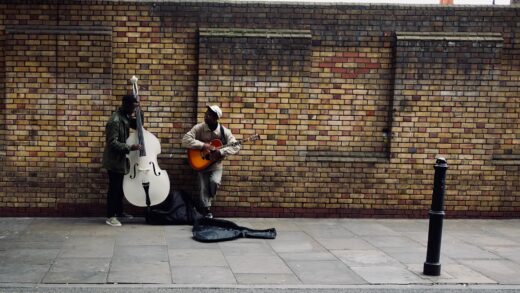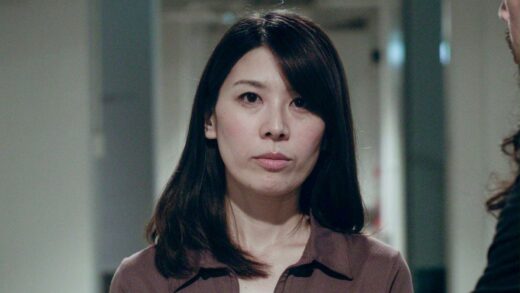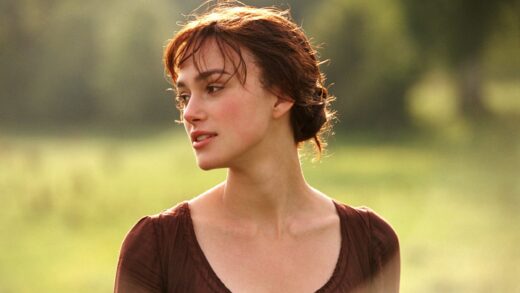The Killing (1956). Directed by Stanley Kubrick. Stars Sterling Hayden, Coleen Gray, Marie Windsor, Elisha Cook Jr., Jay C. Flippen and Timothy Carey.
A cadre of fascinating characters plan a clever robbery of a horse racing track. The heist seems to go off without a hitch but everything else falls apart.
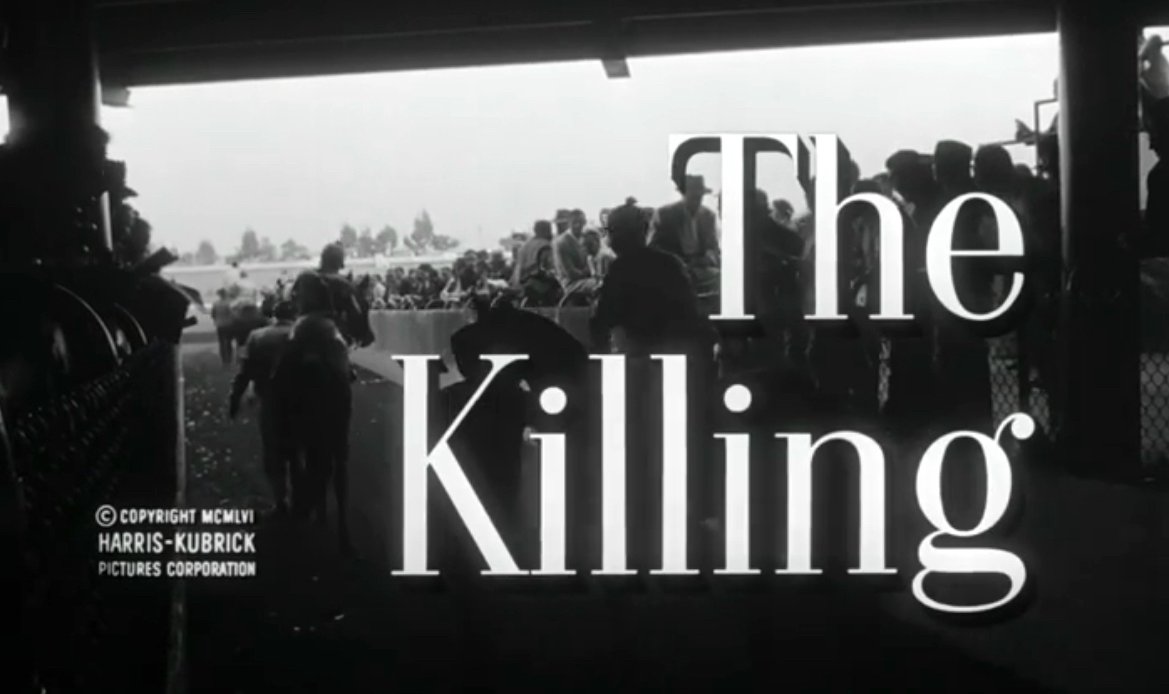
The third feature film by Kubrick lacks any of the most salient features we identify with his body of work. No long takes with eerie environmental music. Instead, The Killing is a short study in misanthropy that pretends to be a heist gone wrong. Actually, the heist was perfect. It was what happened before and after …
At the center of the film seems to be Sterling Hayden‘s character Johnny, who plans the heist. But quickly we learn that those around him are more interesting. He’s our guide in a rogue’s gallery, introducing us to true grotesques à la Sherwood Anderson.

George, opener of doors and his mouth
Primus inter pares, George (Elisha Cook Jr.) works as a horse track cashier but his sycophantic attachment to his wife Sherry (Marie Windsor) turns out to be the primary flaw in the plan. George’s role during the heist is limited to opening a door, but opening his mouth with his wife is his downfall. Desperate to impress her, he all but tells about the job, and she in turn tells her boyfriend Val.
Georges’ blatant emotional manipulation at Sherry’s hands and his dramatic facial expressions as he listen to her and to others are all the narrative needs to indicate how horribly it will all end.
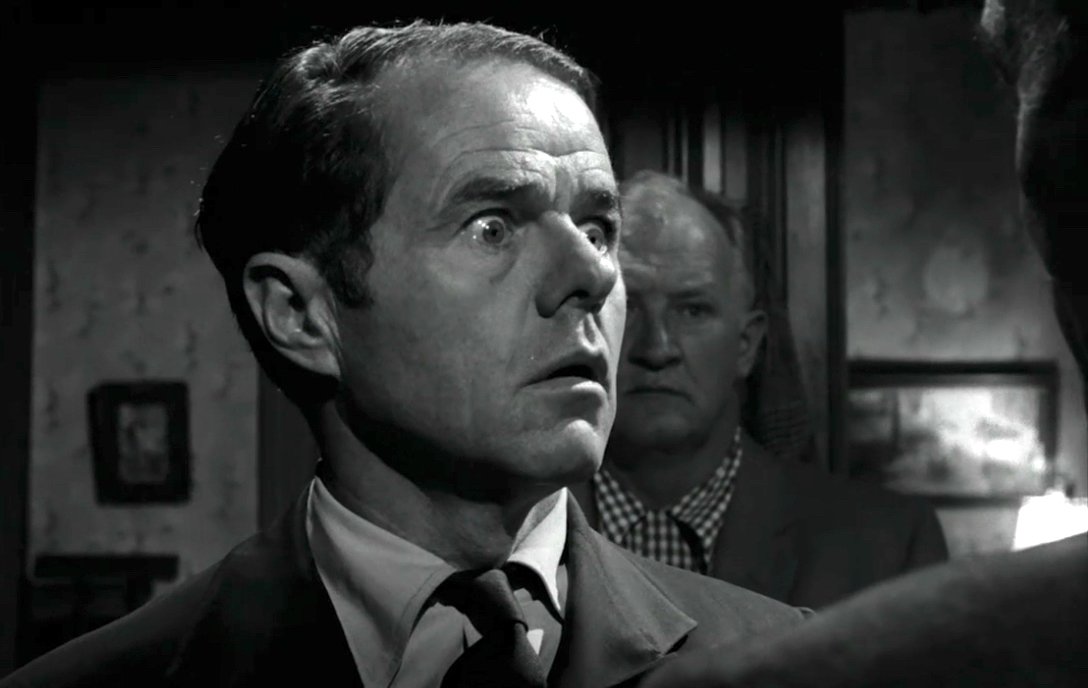
Marvin desires a “seemingly normal, decent life”
Marvin (Jay Flippen), the financier of the plan, is one of the first characters met and himself elevated beyond the addiction to gambling on horses. In fact, his description is the rare one that offers some insight into his character when the narrator explains that he had a “lifelong contempt for gambling …”
Yet he has a horse that he’s watching, namely, Johnny. Though he’s smart and unable to fall to the addictions of most, his attraction to Johnny is more than economic. When the two meet shortly before the heist and Johnny expresses his gratitude, Marvin “doesn’t know how to say this,” but that doesn’t stop him from commenting:
Wouldn’t it be great if we could just go away, the two of us, and let the old world take a couple of turns, and have a chance to take stock of things. It can be pretty serious and terrible, particularly if it’s not the right person. Getting married, I mean.
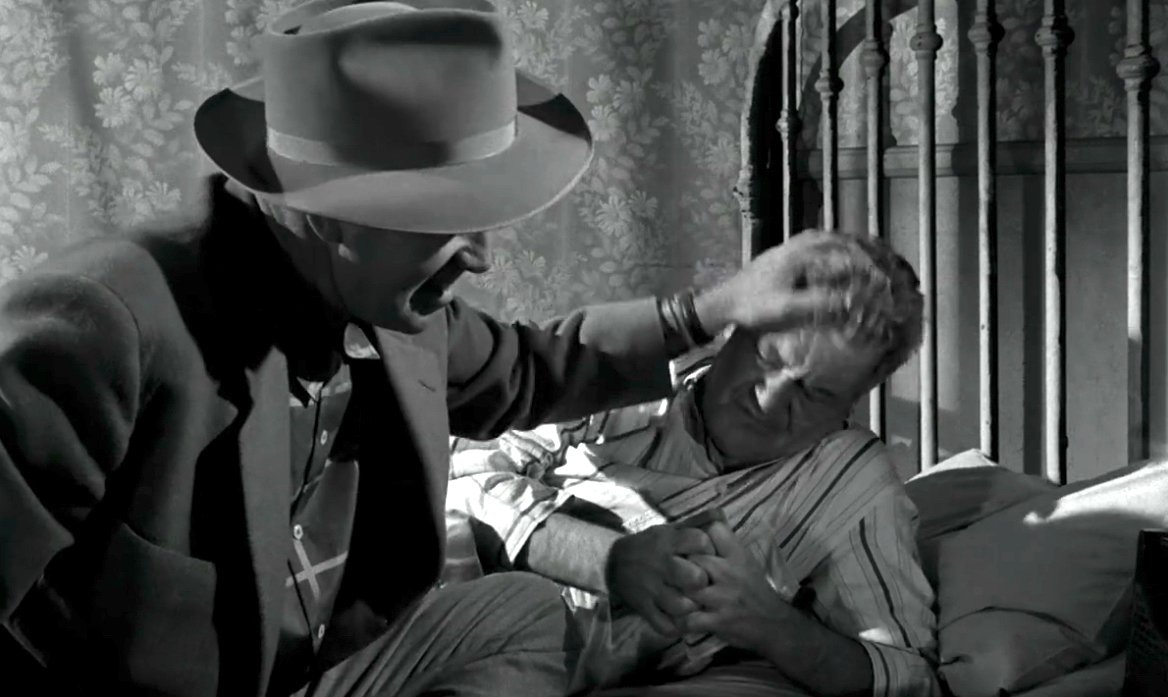
Johnny subtly deflects Marvin’s proposition telling him to go back to sleep.
Johnny, the heist’s unconvinced mastermind
Johnny (Sterling Hayden) has only recently been released from prison. He’s staying in an apartment that Marvin has rented for him (and where Marvin may also be staying?).
The heist is to fill his pockets, of course, but from the beginning it is equally an attempt at redemption. When we meet him he’s talking it through with Fay, his wife, at the beginning of the film.
She says, “you don’t have to convince me.” But in fact he is trying to convince himself that he won’t make the same mistakes, just as he’s trying to convince himself that he’s allied himself with the right kind of men:
None of these men are criminals in the usual sense: they’ve all got jobs, they all live seemingly normal, decent lives. But, they’ve got their problems and they’ve all got a little larceny in ’em.
And Fay’s right, he doesn’t have to convince her.
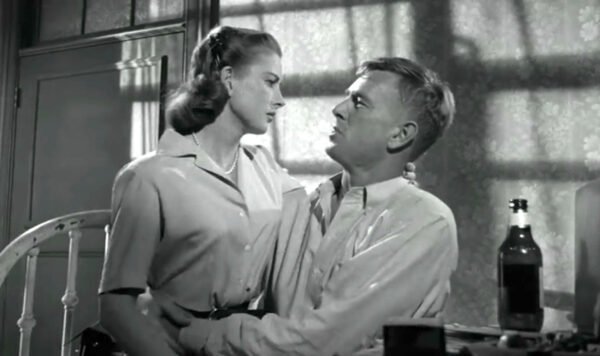
Fay, Johnny’s girl
For Fay (Coleen Gray) is altogether Johnny’s girl. Although her moments in The Killing are fleeting, immediately it’s clear how desperate she is. She tells him not to leave her again as he did when he was in prison. Yet for her those five years of his captivity were worse:
Staying by myself of the those years, it was like, not that you were locked in, but I was locked out.
She makes him promise not to leave her because she’s not as good looking, not smart, and has no skills. At the very least, she has no self-confidence. Undoubtedly she plays the good girl (even if pathologically dependent) who has been Johnny’s girl since they were children and who has no prospects of her own. She is absolutely true, but as a result of circumstance, not choice or will.
She’s the opposite of Sherry, George’s wife, but still part of the spectrum of vice.
Sherry, the femme fatale
George’s wife Sherry (Marie Windsor) is undoubtedly the most evil character in The Killing as she verbally and emotionally abuses George, making one wonder how the marriage was ever first arranged.
When we first meet them, he is back from his day at the track, trying to subtly indicate that he’d like to have children. She mocks him mercilessly, her words awash with contempt.
He tries fecklessly to impress her with intimations of the money they’ll possess when the heist is over. She slowly realizes that he may be part an actual plan, “You’ve never been a liar George, you don’t have enough imagination to lie.”
With this realization she starts plying George with charm and ultimately sex.
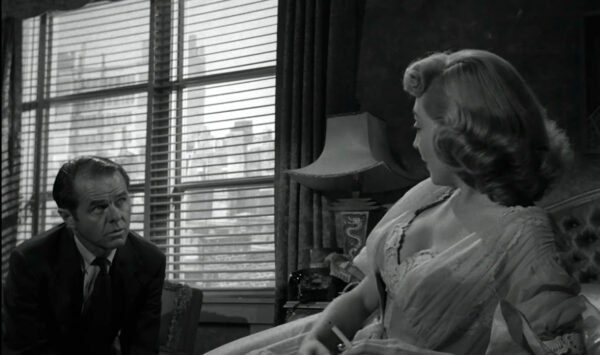
At least Johnny has her number, “I know you like a book: you’re a no-good nosey little tramp. … you have a great big dollar sign there where most women have a heart.” Though she even turns her charms on Johnny, he’s uninterested. He only has larceny in ‘im.
Nikki Arcane (… beautiful name!)
Actor Timothy Carey, who has a fascinating life story worth reading, plays the role of Nikki Arcane, the man Johnny hires to shoot the horse Red Lightning in the middle of the same race while the heist is supposed to take place. Nikki is a gun dealer and veteran, possibly, who lives outside the city where he can shoot his weapons and enjoy his freedom.
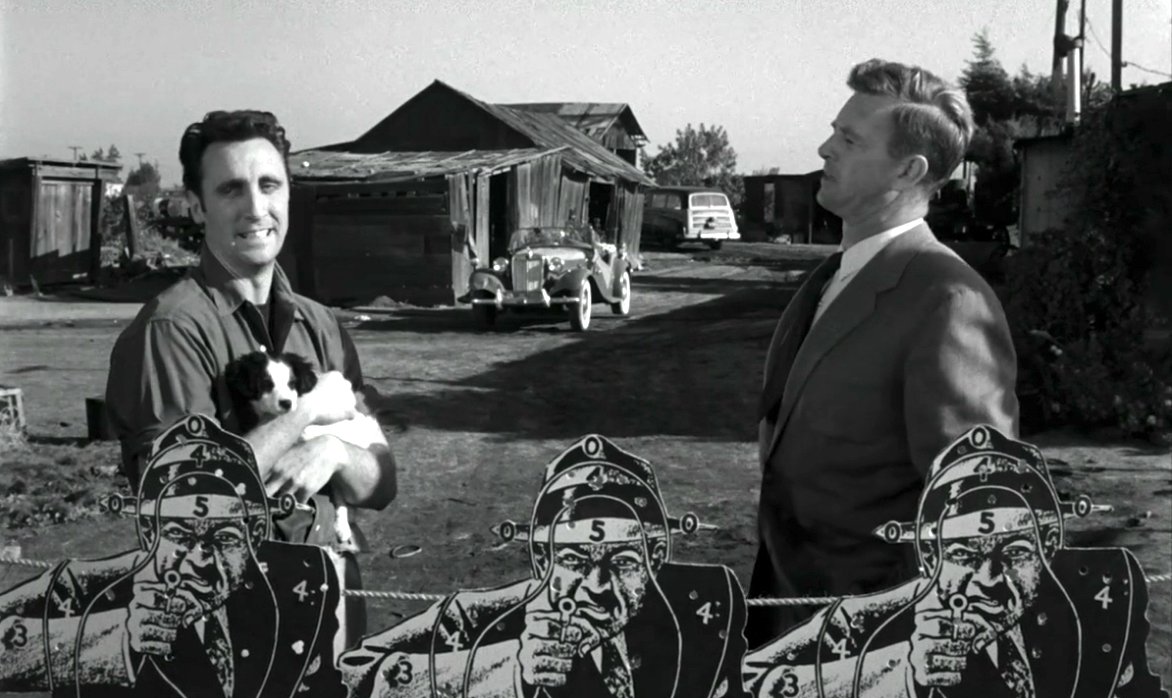
Nikki has a face only a mother could love (although apparently it made its way onto an early design of Sgt. Pepper’s Lonely Hearts Club band LP cover). More important, he speaks without unclenching his teeth. This feature of his character is arguably what makes him so loathsome. He already has Johnny’s trust, indicating them know each other from prison.
He’s there to kill the expected frontrunner in the seventh race, that is, to kill a horse (Red Lightning). It is not totally clear why the killing the horse is necessary, but its crass instrumentality underlines the lack of the most basic empathy. Even when humans are blinded by the thrall of their hatred for other humans, they can usually find some value in non-human companions. When we meet Nikki he carries around a dog. Yet this doesn’t stop him from executing a horse, a crime that Johnny assures him is not murder.
The Killing of Whom?
What if it is the killing of Red Lightning to which title of the film refers? Although there are a host of other killings in the film as it were, none of them quite stand out. None were premeditated.
Red Lightning’s execution does not stand out in the sense that it is given some significant narrative attention. On the contrary, that event is a moment that passes and is nearly eclipsed by Nikki’s racist abuse of a possibly obsequious parking attendant before and unexpected killing by a police officer directly after.
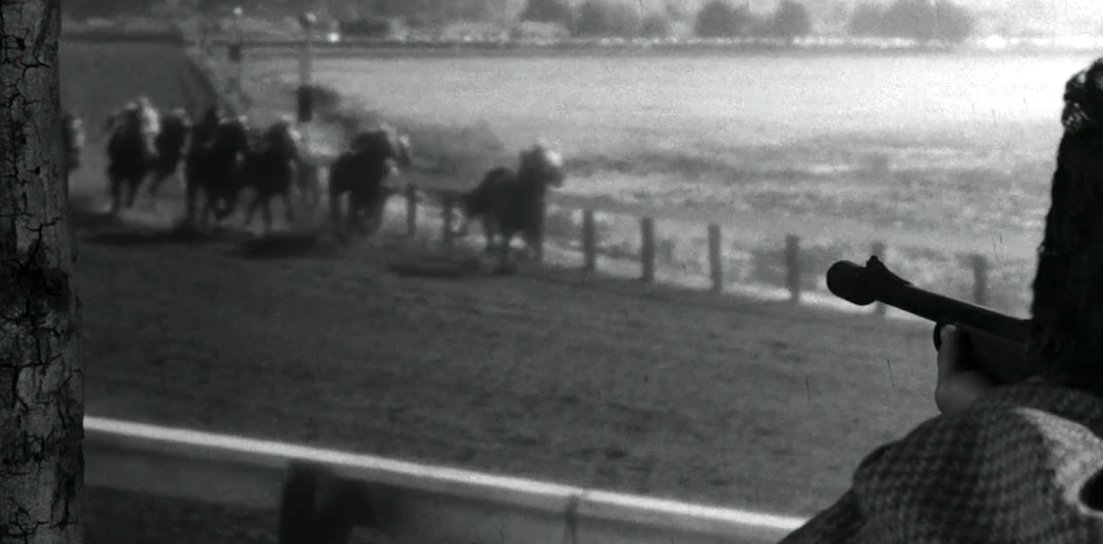
Moreover, the necessity for Red Lightning’s killing remains questionable. The purpose is to detain and distract track police as well as everyone else at the race track. Yet by hiring Maurice Johnny has also arranged to have another person create a fight in the building drawing all of the available officers.
Maurice, the chess-playing philosophical wrestler
Maurice (Kola Kwariani) is the one character in The Killing untouched by the violence of the heist and also beyond the misanthropic eye of the narrative. He is the stand-in for Kubrick himself (this reminds me of a funny, possibly apocryphal story attributed to Faulkner in which, when confronted by a young lady who explains that all authors imagine themselves in a character’s personage and then asked what character would that in the novel Sanctuary, he replies, “the corncob” [with which the female lead was raped—yes, great writer dabbling in a little misogyny, shocking]).

Maurice we meet in a chess club (Kubrick was a chess player himself) giving unwanted advice to two involved in a match, when he’s not offering philosophical insights. He sees the cognitive weaknesses of others and remarks as such (see quote below), but this does not interrupt his relationships.
Maurice: “In this life you have to be like everyone else — the perfect mediocrity. No better, no worse. Individuality’s a monster, and it must be strangled in its cradle to make our friends feel confident. You know, I’ve often thought that the gangster and the artist are the same in the eyes of the masses, they are admired and hero-worshipped, but there is always present an underlying desire to see them destroyed at the peak of their glory.
Johnny: “Yeah, like the man said, life is like a glass of tea, eh?”
Maurice: “Oh Johnny, my friend, you never were very bright”
The conspicuous narrator
Voiceover narration is held in low regard by film critics, as I understand it (consider an interesting commentary on its use in Terence Malick films that implies as much), and with some good reason. A narrator for a film provides the context and intention of the film that should be provided by the exposition. What’s more, the narrator directs the viewer towards a specific understanding of the film’s events.
In The Killing the narrator counts the days and minutes, most vitally ensuring the narrative continuity, but just as much offering some judgment of the film’s characters. For instance, we are introduced to Marvin and the beginning of the film with this long-winded, curious description.
At exactly 3:45 on that Saturday afternoon in the last week of September, Marvin Unger was, perhaps, the only one among the hundred thousand people at the track who felt no thrill at the running of the fifth race. He was totally disinterested in horse racing and held a lifelong contempt for gambling. Nevertheless, he had a $5 win bet on every horse in the fifth race. He knew, of course, that this rather unique system of betting would more than likely result in a loss, but he didn’t care. For after all, he thought, what would the loss of twenty or thirty dollars mean in comparison to the vast sum of money ultimately at stake.
Not wholly unlike Tarantino’s films — although those films make the temporal play an explicit formal feature — the overlapping stories on the day of the heist are uninterrupted so that we see what befalls each of the characters on that day.
The genius of Johnny’s plan shines by this exposition, just as the minute flaws, one of which shall lead to collapse, have more force as a result.
Fatal flaws or fatalism?
George’s fatal flaw, namely confiding in his treacherous wife, leads to the shootout killing all but Johnny. Johnny has avoided the shootout only through being caught in the same traffic and melée at the racetrack that made the robbery possible. In other words, it wasn’t through his will. Yet he still buys a used suitcase with a faulty lock. When Johnny transfers the money from the duffel back to the suitcase, his impatience leaves money on the ground and we see one of the locks fail before the other appears to work.
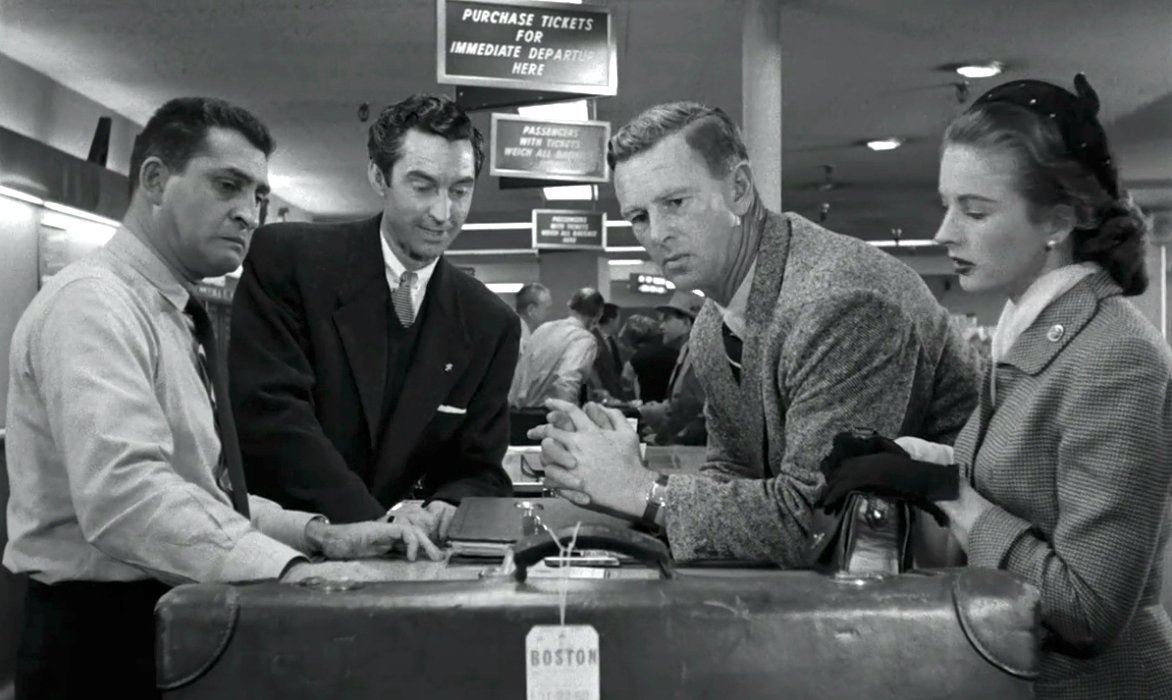
Johnny is then forced to check that suitcase when he and Fay reach the airport though he uses all of his powers to avoid doing so.
Then, as they wait to board the plane, a woman’s dog — she is also fodder for the camera’s misanthropic eye with her witless pampering of a mangy toy poodle — runs into the path of the baggage car that swerves to avoid it. The suitcase is thrown off of the cart and immediately its latch breaks open, spilling two million dollars onto the ground behind an airplane’s running propellor, promptly blown away.
How did Johnny fail to avoid this event?
He cannot even leave the airport without being nabbed, just a few seconds from a cab ride to whisk them away. The airport police approach, and when Fay tells him to run, he resigns himself to his fate: “What’s the point?”
Film noir and misanthropy
Film noir, of which The Killing is a strange, not necessarily paradigmatic, example, permits some sympathy for its protagonist. This is the case in Out of the Past, (1947) Angel Face (1953), Gilda (1946), and others. But this is not the case in The Killing. We may feel somewhat bad about Johnny, but he couldn’t outstrip the justice of the camera’s misanthropic eye. The horse’s killing is the tragedy. Barely a moment in the flow of the narrative’s time, it is still the only character who doesn’t deserve what it gets.
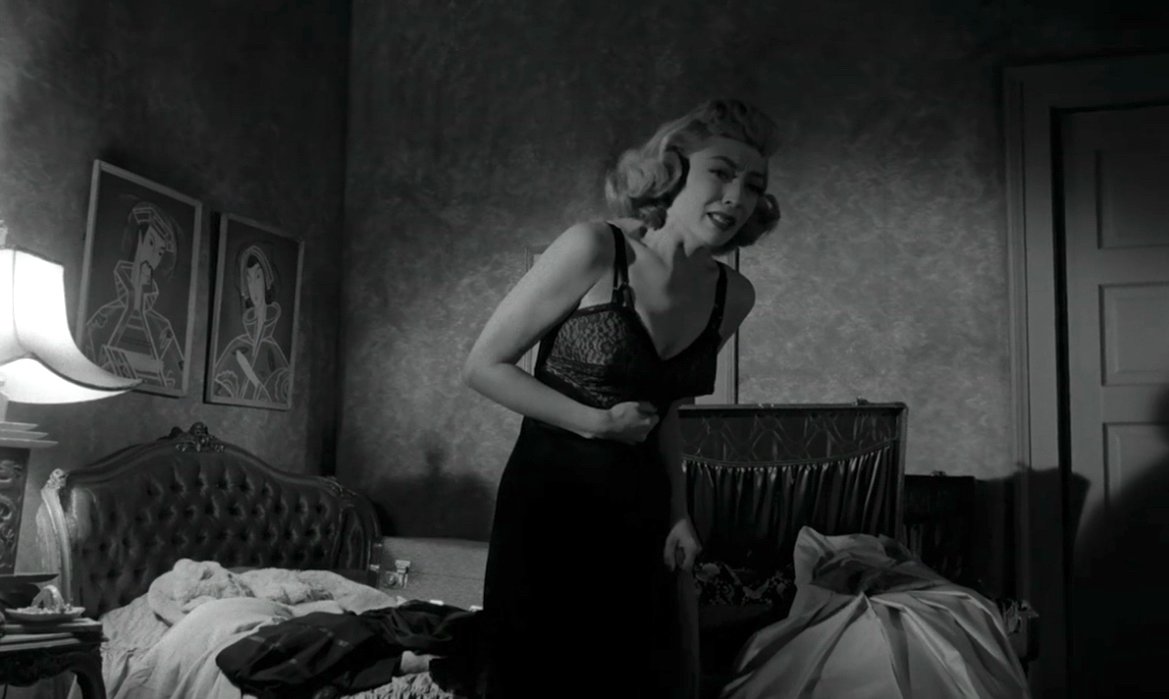
When George shoots Sherry and then dies himself, the scene is garrish but lacking even the slightest indication of sorrow. Sherry’s final lines ask why this happened to her. George is barely a person. He’s an occasion for a beautiful, albeit horrifying image.
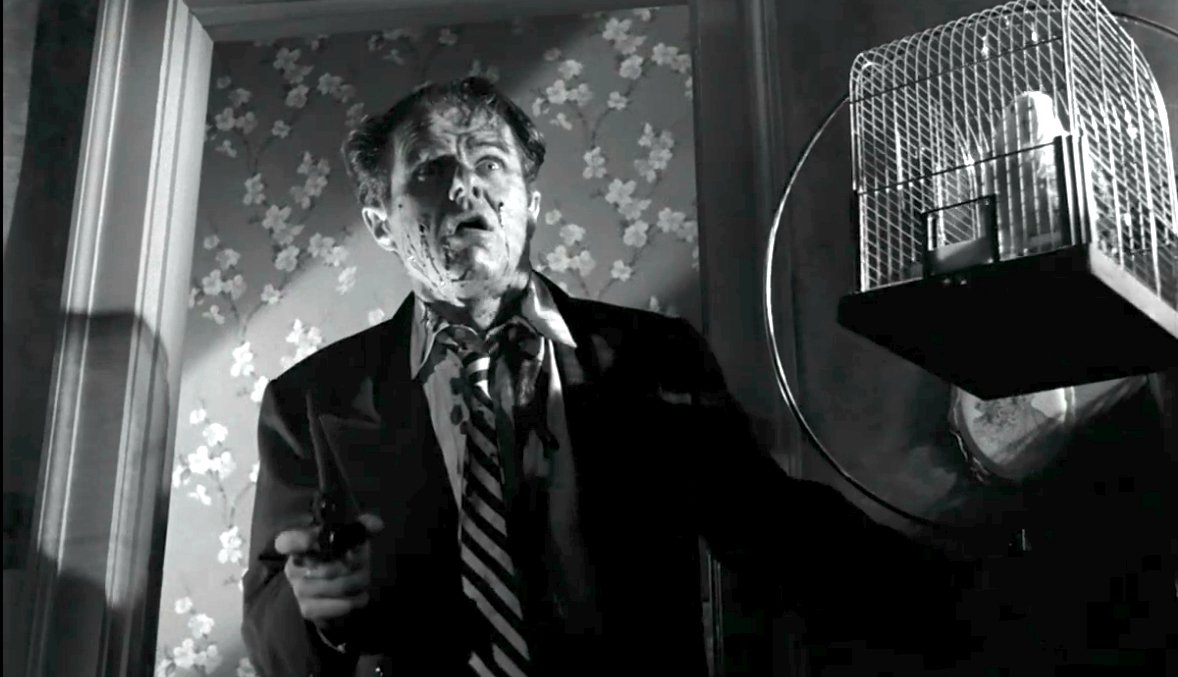
Although advertisements for The Killing feature a still of Johnny in a mask within the counting room of the racetrack, I’d argue that the above image is more fitting description of what takes place. Murder as spectacle, something beautiful, for which the narrative has presented a group of ne’er-do-wells whose destruction we will undoubtedly enjoy, just as Maurice said.

